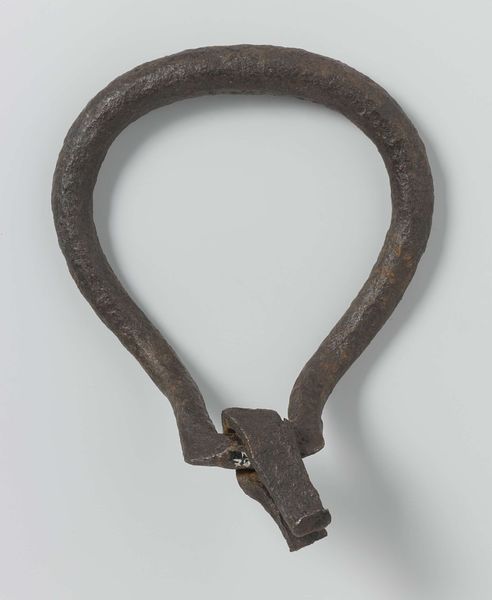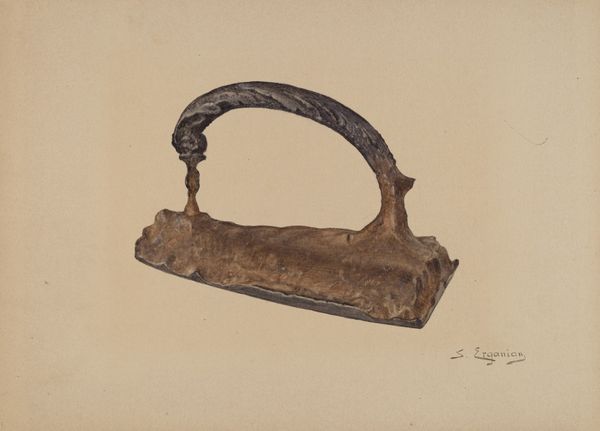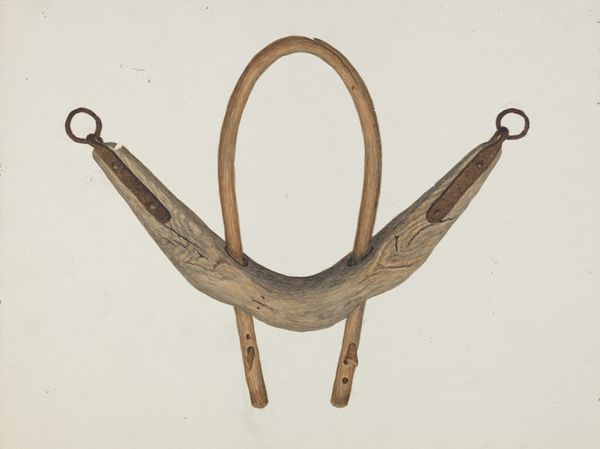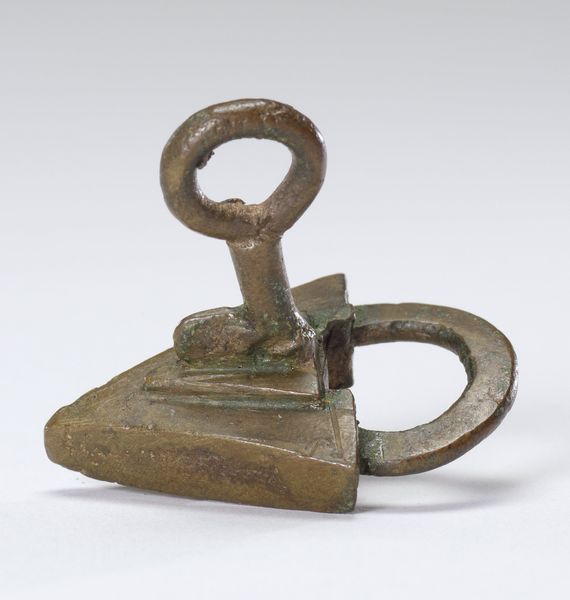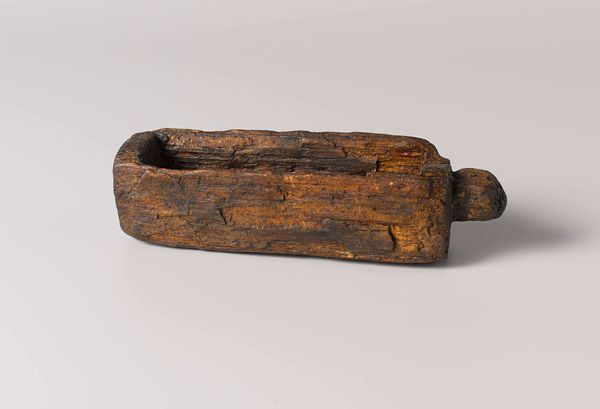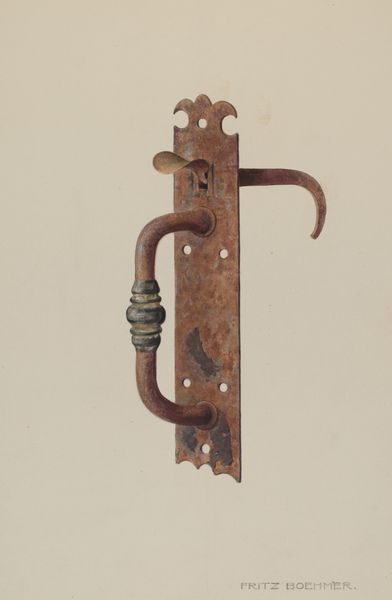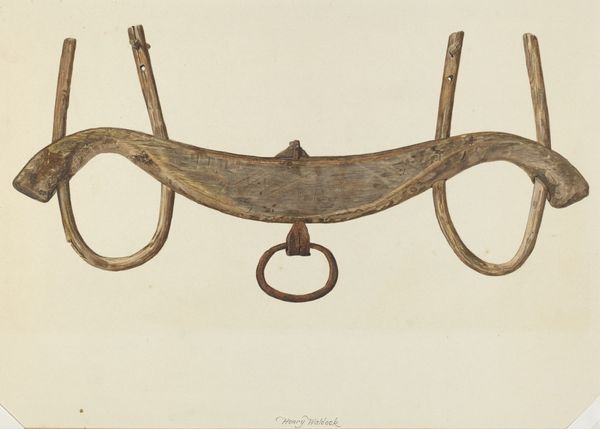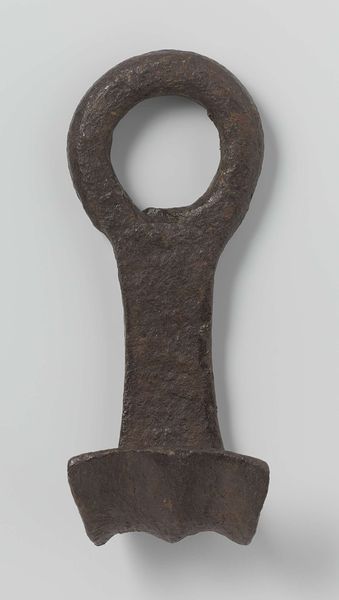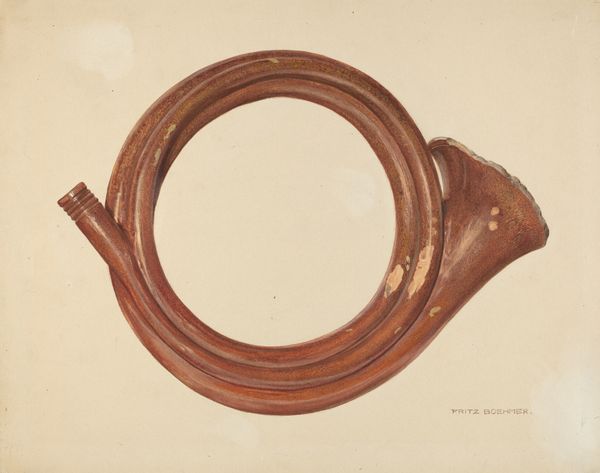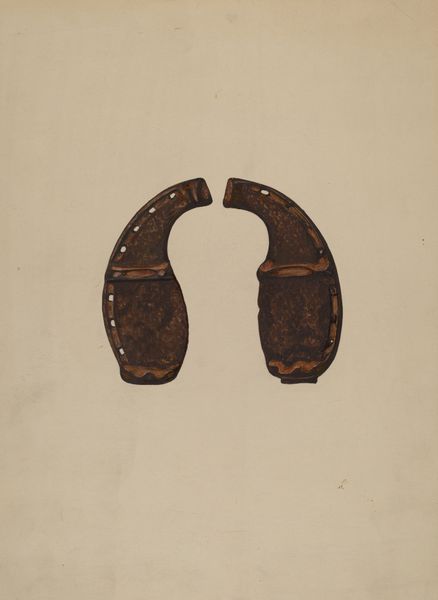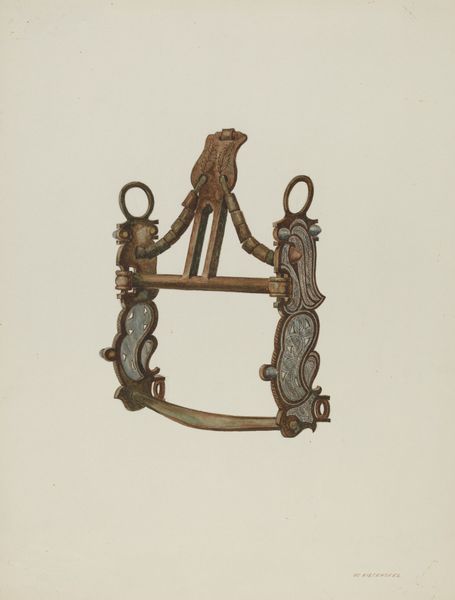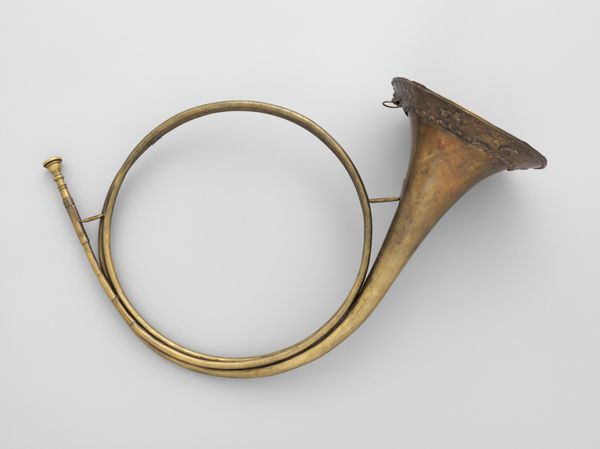
drawing, watercolor
#
drawing
#
watercolor
#
watercolour illustration
#
realism
Dimensions: overall: 24.3 x 31 cm (9 9/16 x 12 3/16 in.)
Copyright: National Gallery of Art: CC0 1.0
Editor: So, this is "Iron," a watercolor drawing from around 1941 by Gerard Barnett. It depicts... well, an iron. There's something kind of sad about it, like a forgotten tool. What catches your eye in this piece? Curator: I am interested in this watercolor as an object that references the material realities of labor, particularly domestic labor. Notice the emphasis on the iron's weight, its rough texture, and its grounded presence on the page. This isn’t some idealized image of domesticity. Editor: I see what you mean. It does feel very grounded. Curator: Exactly. Think about the time this was created. 1941, at the beginning of the World War 2. How might an object like this—utilitarian, humble—speak to the wartime experience and its impact on domestic life? Were women ironing at home, or in factories? Was fabric more precious and in need of maintenance? Editor: That's a compelling point. I hadn’t considered the wartime context. Suddenly the iron isn't just a tool; it represents a whole network of labor, materials, and potentially scarcity. Curator: Precisely. The very material—the iron, the fabric it pressed—would have been charged with meaning during this period. Consider the shift in consumption and production; that watercolor isn’t just showing us an iron, but prompting us to ask broader questions about materiality and everyday life. What happens when mundane objects are presented to us as "art?" What sort of reverence do they begin to demand, and for whom? Editor: This changes everything I thought I knew about still life! Thanks so much for helping me see more deeply into it. Curator: Of course. Examining the material and production history of an artwork expands our understanding and creates deeper insights into the era of the work’s origin.
Comments
No comments
Be the first to comment and join the conversation on the ultimate creative platform.
